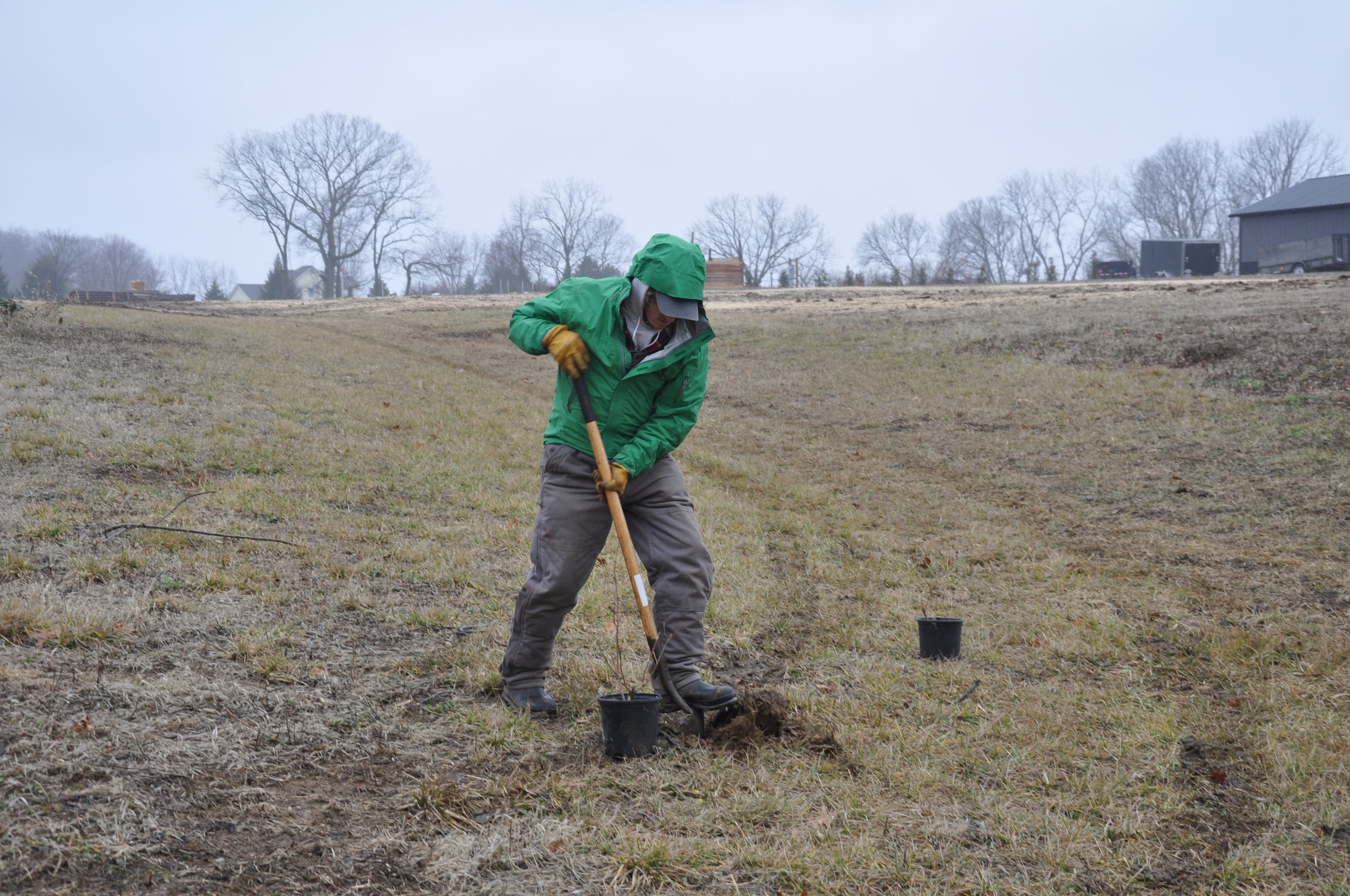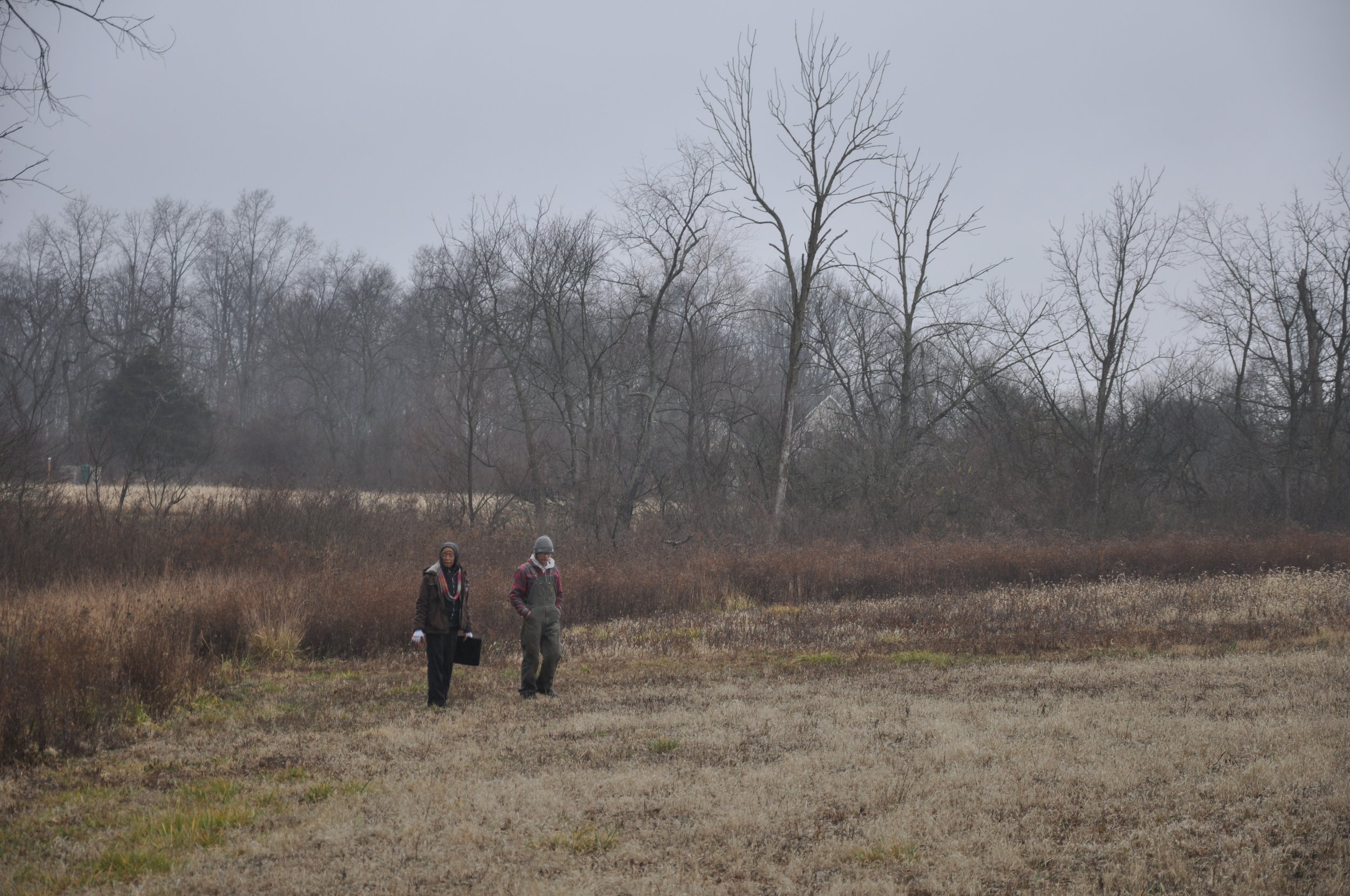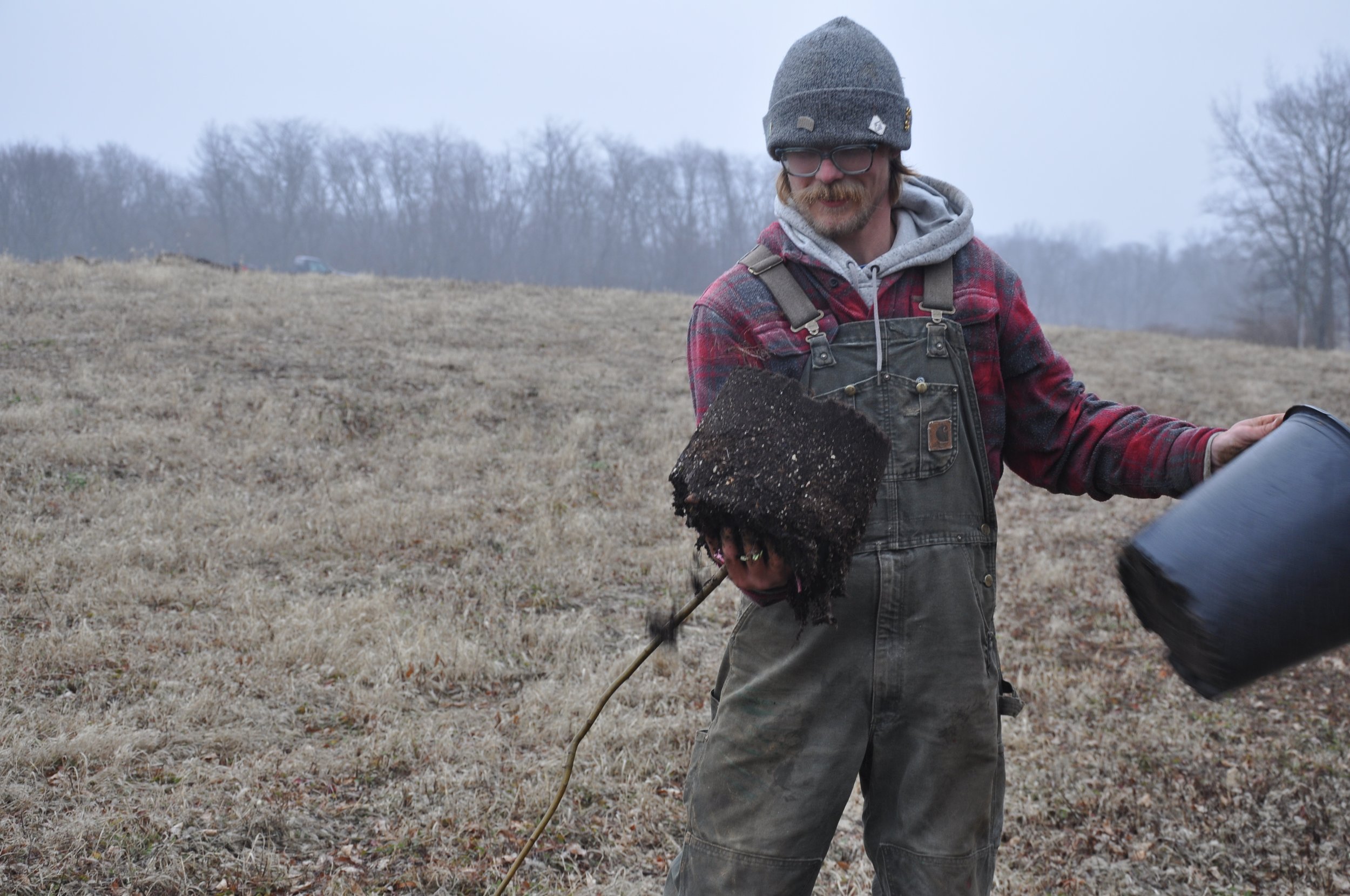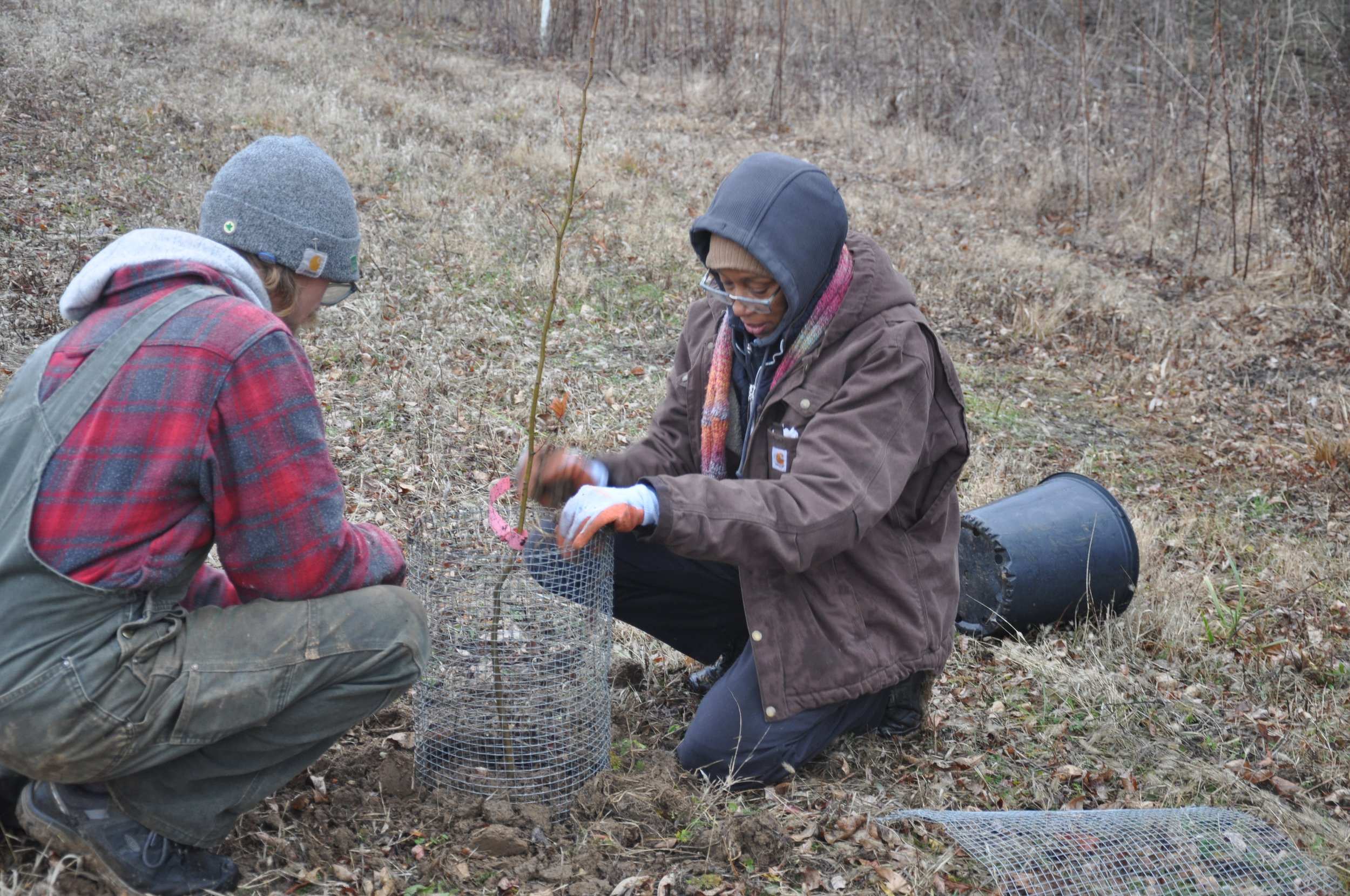‘The Community of Everything’: Planting Trees on the George Washington Carver Farm
Agraria Land Team member David Brown planted an elderberry shrub, among other trees and woody plants, this week. (Photos by Audrey Hackett)
By Audrey Hackett
They made it look easy.
Land Team members David Brown and Matthew Salazar slipped new trees and woody plants into the ground this week. Three elderberry bushes, three tulip poplars, and one destined-for-mightiness sycamore now grace the riparian area of Agraria’s George Washington Carver Farm, the first of a series of planned native plantings at the new grow site.
As the saying goes, the best time to plant a tree is twenty-five years ago. The next best time is … today. On Wednesday, “today” was a drizzly day, the sky heavily overcast, three crows flapping — or was it rowing? — their way through the damp air. “Today” was mid-December, before the long frozen stretch of January and February and the loosening and softening of spring.
“It’s an easy birth,” Salazar said, gently tugging the sycamore sapling from its pot. Bright red rootlets dangled free. A close look revealed ruby-colored leaf buds up the tree’s stem. Among the tallest trees in the eastern deciduous forest, mature sycamores can reach heights of 120 feet. This little tree had decades of growing ahead of it. Anchored in Agraria’s landscape, it could dig in.
“They’re stretching their roots,” Assistant Land Director River Johnson, who is orchestrating the growth and development of the Carver Farm, observed of the newly planted trees. She spread her arms wide in the mirror image of what would, surely, soon be happening underground, a process of hidden growth that’s both essential and mysterious in the life of a plant.
Johnson inaugurated the afternoon’s planting with a celebratory “Let the digging begin!” The elderberries were the first to go into the ground. Shoveling the holes, Salazar and Brown turned up plenty of worms, a sign of healthy soil. Breaking up the chunks of earth around the planted shrubs and patting the ground firm, Brown said he was offering the new bushes “a little elderberry love” to support their healthy growth. “It makes a difference,” he affirmed of the warm-heartedness that accompanied the labor.
The elderberry bushes were sited in a natural “trough” that flows down a slope toward Jacoby Creek, while the tulip poplars and sycamores were planted just beyond the riparian margin, subtly defining a natural perimeter for the Carver Farm.
“It’s exciting to see them in the landscape,” Johnson said, stepping back when the planting was done.
Why plant trees on a farm? There are many reasons, Johnson said. Trees build habitat, prevent erosion, hold water in the soil, provide food, and build diversity into crop systems. “We’re building diversity above and below the ground,” she explained. Trees also build community — “the community of everything,” Brown added.
Other trees and woody plants that will be planted on the George Washington Carver Farm and elsewhere across Agraria include river birch, hazelnut, witch hazel, spicebush and other viburnum species, pawpaw, persimmon, ginkgo, and more. Johnson also has in mind a particular red mulberry tree to add to the Carver Farm site. The trees, some of them donated, come from the burgeoning Native Plant Nursery, which Johnson and others are establishing at Agraria for planting across the land and for sale to the public.
The last step was putting wire around the new plantings to protect them from nibbling deer. Rain glistened on the slender stems and turned-up soil. It was time to leave the trees to weather and winter. And to the promise, never yet broken, of spring.
*Audrey Hackett is associate editor of Agraria Journal.





